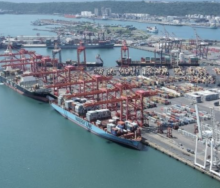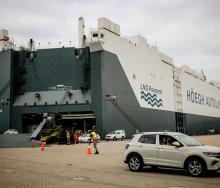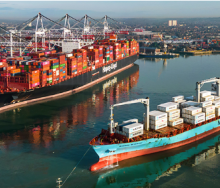The idle containership fleet stands at 324 units (aggregating 711 000 TEUs) as at March 8, based on the latest Lloyd’s List Intelligence inactive vessel survey.
The existing idle capacity represents 4.6% of the total fully cellular fleet, approaching nearly 50% of the record 1.5-million TEUs that were laid-up in late 2009.
Predictably, it is independent owners again who bear the brunt of the idling programmes, holding 76% of the total, while the remaining 24% is controlled by ocean carriers. The volume of idled container capacity has been steadily increasing since the beginning of the year, as freight and charter rates have weakened, affecting the ability of both groups to effectively employ their vessels.
In the long term inactive group, the largest portion concentrates in the feeder to feedermax categories (up to 999 TEUs) with 99 vessels idle for more than 91 days, implying that the introduction of larger tonnage into trade and the consequent cascading effect, put the owners of the smaller segments under increased pressure to find employment for their fleet.
Owners of handy, sub-panamax and panamax tonnage (1 000–4 999 TEUs) find themselves under a similar strain, as demand for ships of these sizes has declined following from the continuing service rationalisation favouring larger tonnage. At present, 144 ships (or 4.9% of the total fleet) in the pre-mentioned categories lie idle.
The number of vessels over 8 000 TEUs left without employment stands at 17 units aggregating 156 000 TEUs, out of which, 6 units have an average capacity of above 10 000 TEUs.
The 13 100 TEU Maersk Evora and the 11 356 TEU CMA CGM Centaurus have been lying at anchor since February, with the latter vessel waiting just off Zhoushan, China, to be deployed in the FAL 1 service on April 26. The FAL 1 is being upgraded to include 11 instead of 10 ships, with new partner UASC taking slots on this service - branding it AEC2 - and providing 2 ships.
Lloyd’s List Intelligence forecasts that the number of idle ships will continue to rise closer to 1 million TEUs by the end of the year, as carriers continue to rationalise services and withdraw capacity in order to manage the new vessel deliveries and the inevitable cascading effect these will create.
Meanwhile, the pace of scrapping activity has picked up. The number of ships that have been scrapped so far this year total 21 vessels with an intake of 40 000 TEU, representing already 67% of the entire fleet that was sent to the breaking yards in 2011.
Finally, with economic woe continuing to steal the headlines, it is also noteworthy that there has been an apparent shift in the balance of new vessel contracting.
In the first 2 ½ months this year the number of new orders has virtually dried up. Lloyd’s List Intelligence records only one ship as having been ordered so far, and it belongs in the feeder category. This stands in sharp contrast with the same period last year when 591 000 TEU had been contracted by the end of March, representing one third of the entire 2011 orderbook.












